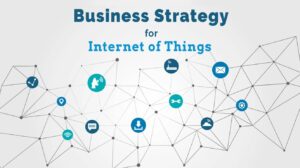The capacity of the IoT (Internet of Things) enables individuals and enterprises to create value faster than ever. Nearly everything a business does to run an organization relies on digital technology. The IoT evolved into the prevailing data and communication management through digital technology. Connected, smart objects offer opportunities for value capture and creation. IoT devices are the result of combining information and operational technologies.
Many technologies result from converging low-price hardware, big data, embedded systems, mobile computing, cloud computing, and other technological advances. The devices provide network connectivity, data storage, and computing functionality for equipment. They enable new technological capabilities and efficiencies like troubleshooting, configuration, and monitoring. The devices also have the potential to create risks and demand strategies for IoT risk management.
Business leaders must have a plan for IoT risk management that protects collected data and uses it to drive a competitive advantage. The article describes a framework for understanding how businesses create value from collectible information and why resilient, vigilant, and secure systems are necessary at every step. Adopting such an approach is critical to helping leaders identify and respond to risks and drive the performance of the business.
IoT Risk Management
The IoT is a network of devices with software, sensors, and the capacity for communicating with other devices. There is a wide range of applications in the consumer and commercial arenas. They offer the ability to manage devices and systems remotely to change security, heating, and lighting at home or remotely monitor production systems through the internet.
IoT devices offer flexibility and scope for organizations seeking new efficiency savings or providing new services. They provide peace of mind and convenience for consumers. IoT presents a unique challenge for business managers. Managers like controlling IoT devices securely, ensuring they comply with corporate IT standards.
IoT significantly departs from the typical experience in as much as home use of IoT exploded. Many consumers need to be aware of the risks involved or the scale of capabilities in their headphones, smart devices, washing machines, or refrigerators.
Widespread Devices, Widespread Risks
With so many people working from home, employers are interested in how employees use and secure technology at home. The issue is significant to operational, IT, IoT security, compliance, and risk managers at companies worldwide. Unsecured devices threaten exploitation by hackers who want to use them as a means into a personal or corporate network.
Since 2020, corporate and private networks have mingled so that an insecure domestic environment can impact a secure corporate environment through insecure IoT devices. The risks come from various sources. Many people need to be made aware that a device is internet-ready.
Passwords embedded in the devices remain the factory default, which makes them ready for exploitation. Security patches are only sometimes up to date. The combination and volume offer hackers an array of surfaces from which to launch attacks.
Safety Challenges for Businesses
New digital technologies frequently come without proper security measures. Security vulnerabilities and gaps in protecting legacy systems include
- Weak password protection
- Lack of or weak patches and update mechanisms
- Insecure interfaces
- Insufficient data communication and storage protection
- Poor IoT device management
- An IoT skill gap
Embedded and hard-coded credentials are dangerous to IT systems and IoT devices. Guessable credentials are a hacker’s windfall that allows a direct attack on a device. Malware logs into IoT devices using a table of common default passwords and usernames.
Connectivity and ease of use are goals in the development of IoT products. They become vulnerable when hackers find bugs or other security issues. Over time, devices not fixed with regular updates become exposed. Malware delivers a worm that spreads from device to device without human contact.
IoT devices need protocols, services, and apps to process and communicate data. Many vulnerabilities originate from interfaces that are not secure. They relate to mobile, cloud, application API, and web interfaces. Lack of authorization and authentication and weak or no encryption are common concerns about IoT devices.
Application security due to insecure data storage and communication are among the most frequent fears. One significant challenge is the use of compromised devices to access confidential data. A study published in 2020 analyzed more than five million unmanaged connected devices in life sciences, manufacturing, retail, and healthcare.
It revealed numerous risks and vulnerabilities across an astonishingly diverse set of connected devices. The threats and vulnerabilities include the US Food and Drug Administration recalling risky and defective medical devices, compliance violations, and shadow IoT devices active without IT knowledge. Companies face a vital IoT skill gap that prevents them from exploiting new opportunities to the fullest.
IoT Strategies
IoT security is complicated, but an IoT software development company knows the best risk assessment and mitigation practices. A fundamental tenet is considering security at the start of the design process and mobilizing expert knowledge as soon as possible. The later the assessment and testing process is, the more costly and difficult it is to make it right.
Weak Passwords
Discovering inadequate contingency plans and critical weaknesses after a breach is even more costly. The first stage focuses on the fundamentals and building from the ground up. The first order of business is to build applications that use the latest protocols and security standards.
Various guidelines, best practices, standards, and policies are available from different sources, such as the National Institute of Standards in the US and the European Union Agency for Network and Information Security. Network managers that use adapted IoT identity and Access Management have a range of authentication features that reduce IoT attack exposure.
Digital certificates, biometric authentication, two-factor authentication, and multi-factor authentication ensure no one gets unauthorized access to connected devices. PAM (Privileged Access Management) is essential to prevent IoT networks from hacker attacks and slash IoT security issues.
Weak Patches and Updates
Responsible manufacturers try to secure their devices’ embedded firmware and software. They release security updates when they discover vulnerabilities. A well-planned FOTA (Firmware Over The Air) strategy includes vulnerability disclosure, regular security updates, and unique passwords.
Insufficient Communication and Storage Protection
Network segregation and secure data storage are crucial. Cryptography is a means of addressing the challenge effectively. Encryption of data prevents visibility when theft or unauthorized access occurs. It protects data in motion and at rest.
Data decryption and encryption ensure the preservation of data confidentiality and privacy and minimize the risks of data theft. It is an efficient solution against industrial espionage known as sniffing attacks when cybercriminals passively access data sent or received on a network.
Cryptography is the standard against Man-in-The-Middle attacks when hackers intercept relevant messages and inject new ones between devices. The same rules apply to communication between connected interfaces and smart objects like mobile apps and the web.
Poor Data Management
IoT implementation with device management platforms radically reduces security threats and vulnerabilities. The platforms provide class-leading management capabilities to update, manage, monitor, and deploy IoT devices. They respond to essential security challenges, and end-to-end solutions must be tackled with device management.
The platforms deliver a single view of devices that helps enable unified security and client abstraction for profiles of fragmented devices. These platform functions improve alerts, security patching, firmware, upgrades, asset provisioning, and reports on metrics specifically associated with IoT assets.
IoT Skill Gap
Training and upskilling programs are part of the Internet of Things cybersecurity. Suggestions include bulletins, hands-on newsletters, and insightful workshops where team members attempt to hack a smart device. They make a huge difference.
Conclusion
Why IoT security is important is impossible to overstate. Security is a critical dimension of IoT design. Cybersecurity strategies aim to protect connected devices and services’ confidentiality, integrity, and availability. Proper security design ensures meeting those goals.
Implementing the suggestions above, like expert knowledge mobilized from the start and authentication and device management solutions based on encryption, prevent unauthorized access to devices, software, and data. These controls ensure service availability and data integrity. A company like Yalantis has its pulse on the regulations, compliance, and security standards businesses need to know.




0 Comments